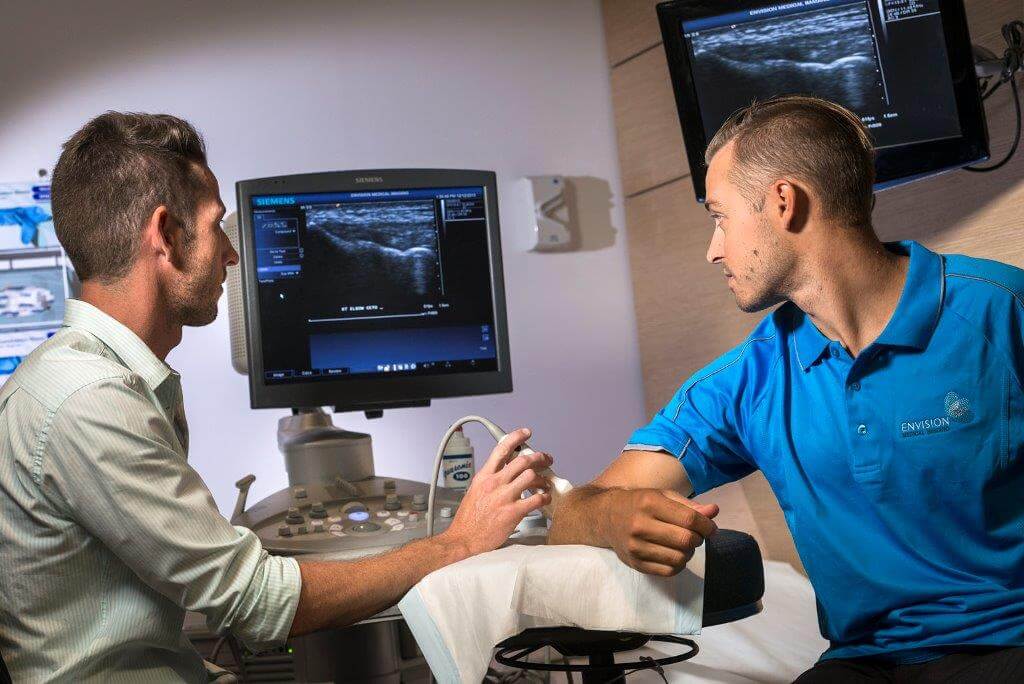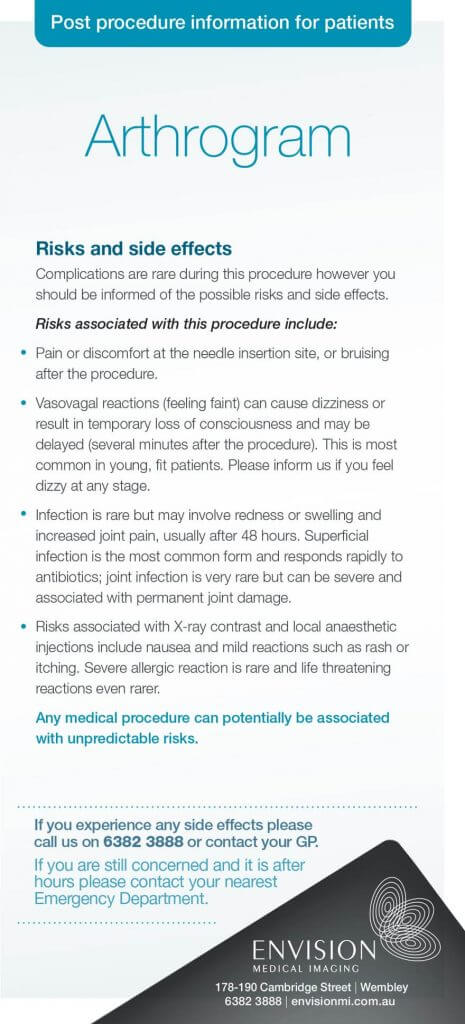Services
Arthrograms
Services
Arthrograms
Services
Arthrograms
Services
Arthrograms
Services
Arthrograms
Services
Arthrograms
Services
Arthrograms
Services
Arthrograms
Services
Arthrograms
Services
Arthrograms

Quick Links
What is an Arthrogram?
An arthrogram is medical imaging used to evaluate conditions of joints. Ultrasound is used to guide the injection of a contrast material into the affected joint by a radiologist. The procedure is most often used to identify abnormalities and causes of pain or discomfort within the:
- shoulder
- elbow
- wrist
- hip
- knee
- ankle
What happens during an Arthrogram?
A. Before your scan
What to bring
- Your request form
- Any relevant previous imaging
- Your Medicare card and any concession cards
Preparation – In the week before your procedure
You must advise us of any blood-thinning medication your are taking such as Aspirin, Warfarin, Plavix or Iscover and stop taking it for a period of time before your treatment. Please contact us for advice.
Preparation – the day of your procedure
There is no specific preparation and you may eat and drink as desired before and after the procedure. You will be asked to fill out a questionnaire regarding your health status, medication, and any known allergies. If there is any chance you may be pregnant, please inform us before your scan. You may also be asked to change into a gown and remove some jewellery for your scan.
B. During your Arthrogram
Procedure
You will be made comfortable on the examination table. For most arthrograms you will need to change into a medical gown and lie on an examination table. Gel will be applied to the area being examined to help create a good contact between you and the ultrasound probe. The probe will be placed directly onto the gel and your skin for the duration of the examination.Your skin will then be cleaned and a local anaesthetic will be injected into site. This may temporary sting until the skin becomes numb (up to 30 seconds).
The radiologist will then insert a fine needle into your joint, guided by images on the ultrasound screen, until it is in the correct area. Contrast is then injected. You may feel some pressure in the joint. You will be asked to move the joint so that the dye moves around it.
Your procedure will take about 40 minutes.
Risks and side effects
Complications are rare during this procedure however you should be informed of the possible risks and side effects.
Risks associated with this procedure include:
- Pain or discomfort at the needle insertion site, or bruising after the procedure.
- Temporary numbness or a tingling sensation can sometimes occur.
- Inflammation which may involve redness or swelling and increased pain after 48 hours. Increasing pain or redness needs to be promptly reported to your referring doctor.
- You may feel faint or dizzy shortly after the procedure.
- An allergic reaction to intravenous contrast material can simulate short term allergic response such as itching, a rash or hives. A more serious allergic reaction to intravenous contrast is called an anaphylactic reaction. When this occurs, the patient may experience severe hives and/or extreme difficulty in breathing. This reaction is extremely rare, and requires emergency treatment.
- Nursing mothers may be advised to avoid breastfeeding for about 24 hours after an arthrogram because some of the ingredients from the contrast dye can pass into breastmilk and may be passed on to your baby.
Any medical procedure can potentially be associated with unpredictable risks.
Who will perform my Arthrogram?
Our specialist medical imaging team will perform your Arthrogram.
What happens after an Arthrogram?
How do I get my results?
After your appointment, the information from your scan is processed and interpreted by Envision’s medical imaging team before delivery of a report to your doctor.
Post-procedure
At the end of the procedure the needle will be withdrawn carefully from the insertion point and a band aid applied. You should be able to go about your daily activities after your appointment.
Post-Procedural Information
Types of Imaging
Types of Imaging
Types of Imaging
Types of Imaging
Types of Imaging
Types of Imaging
Types of Imaging
Types of Imaging
Types of Imaging

